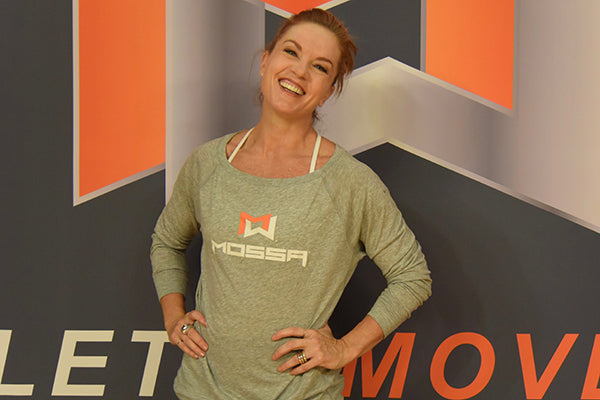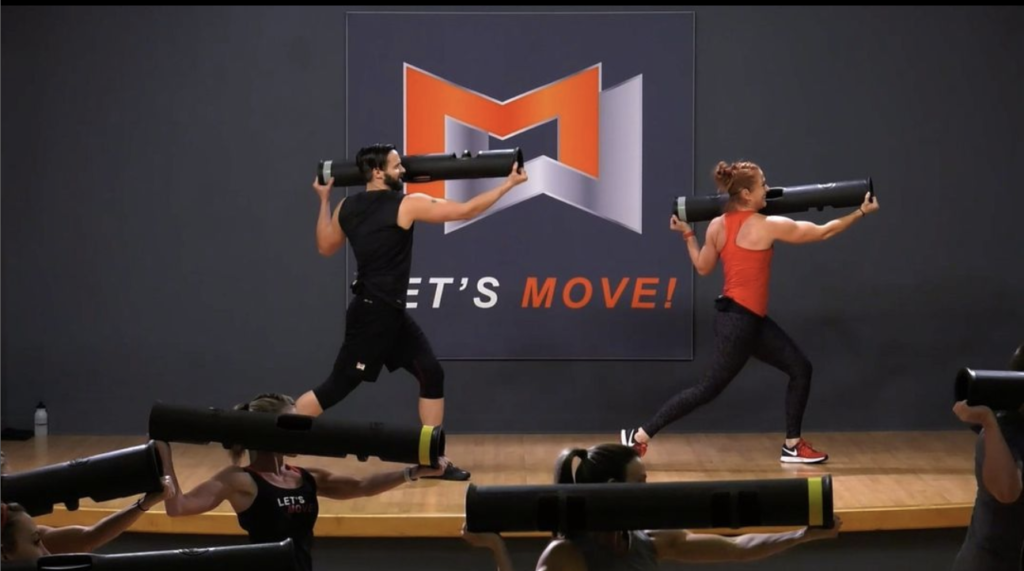By Cathy Spencer-Browning
READ THE ARTICLE IN CLUB INSIDER
Ten years ago, I thought my career in the fitness industry was over. Debilitating injuries had sent me straight to the proverbial bench, then straight to – first – a couple of misdiagnoses, then some “pushing through the pain” and then…straight to the operating room for two surgeries on each hip, a total of four operations in 12 months. It was a harrowing time.
As we all know, hindsight is 20-20. I can see clearly how I ended up where I ended up. I was a sprinter from ages eight to sixteen. I also ran cross country with some mediocre success and then I happily galloped into the fitness industry teaching classes. I competed in Aerobic Competitions (yup, that was a thing) while simultaneously dabbling in triathlons and a marathon. And, spoiler alert, almost 100% of my movement lived in the sagittal plane…AKA forward, backward, and on the spot. The repetition, the lack of movement variability, and the lack of full body tensile strength left me in a place that is all too common in the industry – very fit, but very broken!

Now this isn’t all a sob story, I am thankful for what that period taught me…the learnings were life-changing, and these injuries set me off on a different trajectory in the industry. I became passionate about figuring out what went so wrong, which serendipitously led me to the Institute of Motion.
Through the Institute of Motion’s training and phenomenal people like Derrick Price and Michol Dalcourt, I learned that I wasn’t 3D strong or movement strong. I was strong in a straight line, meaning, my joints were overused, worn out, and unable to withstand the constant repetition in primarily one plane of motion. To be “unbreakable” (stealing Michol’s phrase) our bodies need to be exposed to a wide variety of mechanical loads in a wide variety of different positions. Because we know that our soft tissues (ligaments, tendons, and fascia) strengthen and build along lines of demand, the body then develops a type of physical scaffolding that is at once strong and resilient and yet pliable and flexible. This creates a “play” in our bodies, akin to buildings that are earthquake-proof. Buildings are not made to be earthquake-proof by being stiff and sturdy; they are earthquake-proof because they can move and be moved without breaking.
Case in point…we all know a strong brawny dude who can push much more than his body weight doing a bench press. This is a very linear movement, up and down in 2D. His physical scaffolding is being built along the lines of stress – a straight line pushing up. But when strong brawny dude hits the pickleball court for a casual game with friends, he is suddenly required to be 3D strong (movement strong). Pickleball (or golf, or softball, or so many sports like it) has a massive rotational component, plus explosive and nimble lateral movements from head to toe. So, when he goes after the ball, he is asking his physical scaffolding to tolerate fast motion, combined with rotation. It’s the earthquake that his building wasn’t built for.
Bottom line, our body adapts to the way it is used. Exposure to 3D movement makes us 3D strong, and failure to expose ourselves to 3D movement…well, you can smell what I’m cooking.
Don’t get me wrong; time in the weight training room has many inherent benefits as we become muscle strong. Likewise, walking, running, swimming, and biking (basically straight line-stuff) can be fantastic and lifelong ways to build cardio and muscular strength. I’m not here to talk you out of them. However, we have to bust out of the straight line and – even though it breaks old fashioned “rules” – take a weight, or load, along for the journey. When we combine an external load with three-dimensional movements that mimic real-life lifting, carrying, pushing, swinging, rotating, shoving, pulling, shifting, and shoveling patterns, we are doing what the Institute of Motion coined as Loaded Movement Training. We employ this type of exercise to become movement strong. And when we are movement strong our bodies are more capable, more resilient, and “unbreakable.”
All of this to say that, when I look at the industry and its common service offerings, I fear that they are still stuck in a straight line, doing the same disservice to members that was done to me all those years ago. (Although I take full responsibility.) If we’re going to help people live happier, healthier, longer lives, they have to get out of two dimensions and into one of the most important types of strength: being movement strong.
Ultimately what I experienced, and what I know so many have experienced, is a complete lack of movement strength, a key ingredient in the larger “Movement Health,” which is the ability to move and live well in a body that is free of “common” (they shouldn’t be!) aches, pains, and restrictions.
Digesting this phrase, Movement Health, is easy. If you lack it, you end up like me, heading straight for serious injury: I had dysfunctional movement patterns, I was in pain, I was uncomfortable, my active lifestyle was getting limited. If you train for movement strength, and become movement healthy, you’ll enjoy the opposite: feeling good in your body, being pain free, and enjoying capable and confident movement, whether you’re picking up a kid from the ground, or picking up a pickleball paddle.
Our customers might not articulate, “How can I get 3D strong?” or “How can I get movement strong?” because they don’t know what they don’t know. They might even think it’s “wrong” because their strength training knowledge lives in the era of my Aerobic Competitions. But that doesn’t mean they don’t need it; everyone wants to feel strong, capable, pain free, resilient…even injury proof!
And here’s great news
Movement Health and fitness should not be mutually exclusive – they should be mutually inclusive. We can (and should be) concerned about fitness AND Movement Health at the same time and we must assess and be scrupulous about our service offerings to put loaded movement training front and center. (And back and forth and up and down and rotating all around.)
What are we all doing to help customers gain movement strength, or 3D strength? To push them out of straight lines? By adding loaded moment training options to our schedules and our sessions, taking people from 2D to 3D, we’ll help them avoid heading straight for a physical disaster. Because we all deserve a body that is going to perform in athletic ventures, give us the freedom to explore, allow us to play with kids and grandkids, and take an “earthquake” without crumbling.

Movement strength is so important to us at MOSSA that we have two programs, 3D30 and MOVE30, that are 100% dedicated to being movement strong, and the idea of being “muscle and movement strong” is part of the DNA of all MOSSA programs. We even recently introduced a loaded movement recovery, Move & Mobilize, on our streaming platform, MOSSA On Demand.